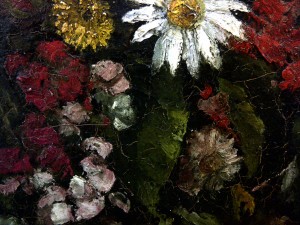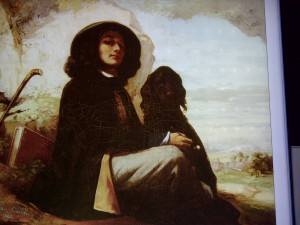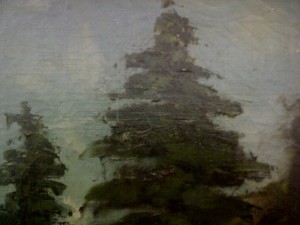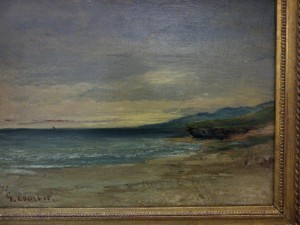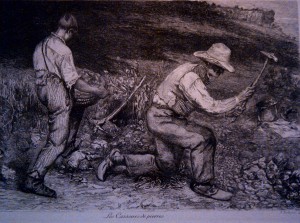Home » 2012 (Page 24)
Yearly Archives: 2012
Once upon a time, there was…
The Pea and the Princess adapted from its original version.
[youtube]http://www.youtube.com/watch?v=mqRUPjfr7aI&feature=related[/youtube]
Once upon a time there was…a Prince but he wanted a Princess.
He travelled around the world but there was always something wrong.
-“There must be a real Princess for me somewhere!” he thought.
There was always something wrong and Our Prince could not find one.
One day, there was a terrible storm with thunder and lightening.
In the middle of the storm, something happened and a Princess appeared but the Old King did not believe the Princess nor did the Prince. They thought she was not a Princess because of her appearance.
The Princess stood outside and she was in a terrible state because of the rain on her clothes and her hair and her face…
-“We shall see if you are a real Princess!” (On va voir si vous êtes une vraie Princesse!”)
She put 20 mattresses and twenty feather-beds. And she put a pea under the mattress or mattresses.
-“How did you sleep last night?”
-“I slept terribly bad!”... she said. “I hardly closed my eyes and my body is all black and blue.”
So the Prince was sure she was a real Princess.
The pea was placed in a museum!
Everybody can see it now!
My conclusion about Andersen’s tale?
Vocabulary=
a tale=
Once upon a time=
to want=
to travel around the world=
somewhere=
something wrong=
to find=
a storm=
thunder=
lightening=
to believe=
to think=
outside=
inside=
mattress=
feather-beds=
I can show you some irregular verbs
[youtube]http://www.youtube.com/watch?v=i7fzEU-kosE&feature=related[/youtube]
Looking for Eric by Ken Loach -under construction-Collège et cinéma
1)Underline 5 similarities between Ken Loach’s life and work and Gustave Courbet’ s life and work.
2)Choose 5 sentences or more and ask as many questions as you can.
Gustave Courbet was born in La Vallée de la Loue (Loue Valley) in Franche-Comté on June 10th 1819 .He studied in Besançon and Paris. His family wanted him to study law but he preferred drawing and painting. He spent a lot of his time in museums copying a huge amount of paintings and eventually stopped studying law. He was politically involved in La Commune and was attributed the destruction of La Colonne Vandôme.
He liked saying “Courbet sans les courbettes”.It means that he was a very straightforward person with a lot of personality- at times, too much!He wrote many interesting pamphlets and letters to explain his viewpoints about painting. He didn’t want to work for the Académie des Beaux-Arts and refused any type of promotion linked to the government because he wanted to be a free “thinker”.
He had a son who died when he was 25 years old .
He was condemned by the French government and put in prison. He died in exile in Switzerland on December 31st 1877. The debate about his responsibility or the absence of responsibility in the destruction of the Column is still going on.
His painting has the realism of every day life:
-people at work
-people coming back from a burial
-ordinary people at a burial
-hunting scenes with realistic details
-ordinary people by the riverside
-nudes with realistic details
-portraits and landscapes of his region
The common key-word and denominator between the two people is r e a l i s m .
Ken Loach was born on June 17th 1936. He started studying law and eventually became a comedian. He is interested in shooting films and documentaries about daily life.He becomes the reference for “docudrama”, a mixture of fiction and documentaries.
He wants to show the difficulties of people in today’s world. The words which best sum up his work are= dark and gloomy, depressive and depressed, depression, gloominess and darkness.
He usually resorts to ordinary people rather than real actors.
He likes shooting films about the working-classes.
Kes (1969) is a film about a young boy who trains a kestrel in an ordinary working-class family with very ordinary people.
-cinema as a tool for understanding our world
-cinema should inform, educate and high light our human condition
-cinema should stress important elements in people’s daily life=
their problems in their jobs and their family relationships.
-cinema should serve politics, ethics and economy more than entertainment.
– “Humour is essential to our humanity”. “It is a question of survival.”
– Football is part and parcel of social life in working class families
Regions shot by the artist:
Sheffield, Manchester-Liverpool , Glasgow.
http://www.visitengland.fr/destinations/find/yorkshire/dg.aspx
